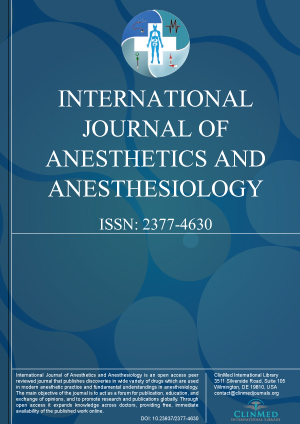Archive
Open Access DOI:10.23937/2377-4630/1410096
Fernanda Rondon Fonseca Pirangy, Mirlane Guimaraes de Melo Cardoso, Ivandete Pereira Coelho Pimentel, e Mewryane Camara Brandao Ramos and Jamilly Reboucas Demosthenes Marques
Article Type: Research Article | First Published: September 23, 2019
Article Formats
- Abstract
- Full Article
- XML
- EPub Reader
Open Access DOI:10.23937/2377-4630/1410095
Bastian J, Bauer A, Kern C and Robertson-Baeriswyl M
Article Type: Case Report | First Published: August 23, 2019
Article Formats
- Abstract
- Full Article
- XML
- EPub Reader
Open Access DOI:10.23937/2377-4630/1410094
Persistent Lactic Acidosis - Think beyond Sepsis
Emily Pallister and Thogulava Kannan
Article Type: Case Report | First Published: August 21, 2019
Article Formats
- Full Article
- XML
- EPub Reader
Open Access DOI:10.23937/2377-4630/1410093
Hazem El Sayed Moawad Weheba, MD, Tamer Abdelsalam, MSc, Sameh Ghareeb, MD and Mohamed Younis Makharita, MD
Article Type: Research Article | First Published: August 08, 2019
Article Formats
- Abstract
- Full Article
- XML
- EPub Reader
Open Access DOI:10.23937/2377-4630/1410092
Christopher F Tirotta, Richard G Lagueruela, Danielle Madril, Marysory Irizarry, John McBride, Davinder Ramsingh and Jonathan Ho
Article Type: Clinical Study Summary | First Published: August 08, 2019
Article Formats
- Full Article
- XML
- EPub Reader
Open Access DOI:10.23937/2377-4630/1410091
Valentini Pogiatzi, Dimosthenis Petsas, Evripidis Efthymiou, Maria Drogouti, Athanasios Ntonas, and Georgios Ntonas
Article Type: Case Report | First Published: July 27, 2019
Article Formats
- Full Article
- XML
- EPub Reader

Volume 6
Issue 3
Issue 3
